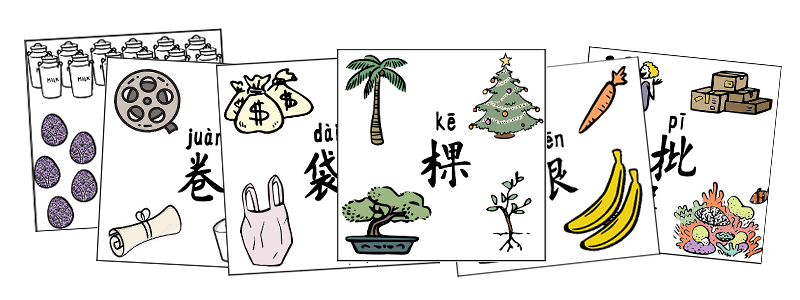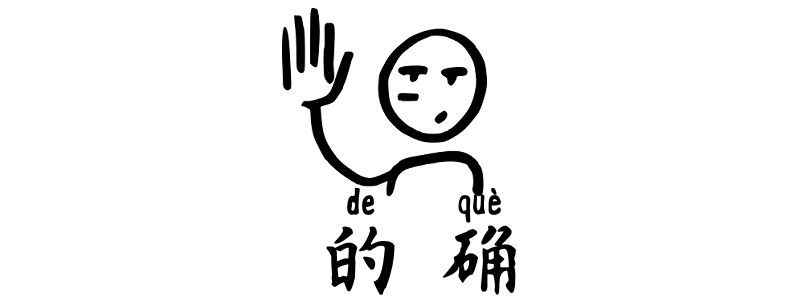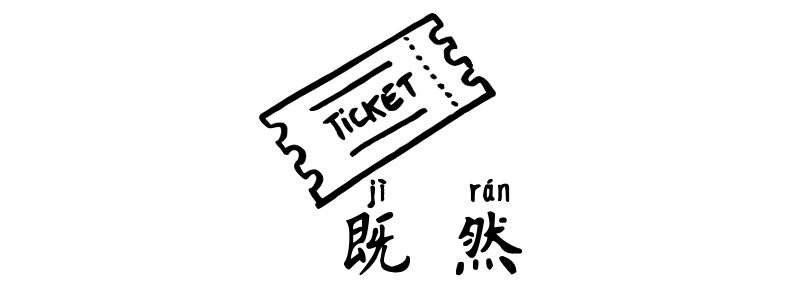TouchHover over the space to see the answers. Fill in the correct word – 就/才/再 她tā昨天zuótiān晚上wǎnshàng加班jiābān到dào夜裡yèlǐ一點yìdiǎn, 所以suǒyǐ晚上wǎnshàng兩點liǎngdiǎn( 才cái) 回huí到dào家jiā她tā昨天zuótiān晚上wǎnshàng加班jiābān到dào夜里yèlǐ一点yìdiǎn, 所以suǒyǐ晚上wǎnshàng两点liǎngdiǎn( 才cái) 回huí到dào家jiāShe worked late last night until 1:00 a.m., so she came home at 2:00 a.m. 因為yīnwèi加班jiābān很hěn累lèi, 她tā打算dǎsuàn今天jīntiān六點liùdiǎn吃chī完wán晚餐wǎncān( 就jiù) 睡覺shuìjiào因为yīnwèi加班jiābān很hěn累lèi, 她tā打算dǎsuàn今天jīntiān六点liùdiǎn吃chī完wán晚餐wǎncān( 就jiù) 睡觉shuìjiàoBecause she was tired from working overtime, she planned to have dinner at…
Author: tiffany
Story – The bird that likes to travel 4
“The bird that likes to travel” is a story for HSK4 learners. Stories I shared some are Chinese folk tales, and some are my creations. Warning: Most of my stories are not for kids. Listen the Complete Story Story Story Part 1 Story Part 2 Story Part 3 Story Part 4 五色鳥聽到有水果跟餅乾馬上就不生氣了。牠變回有禮貌的五色鳥大聲地跟我道謝說:「你有什麼我就吃什麼,謝謝你!」 五色鸟听到有水果跟饼干马上就不生气了。 它变回有礼貌的五色鸟大声地跟我道谢说:「你有什么我就吃什么,谢谢你!」 我在廚房想了一會兒,最後決定拿蘋果和我愛吃的小餅乾。回到房間後我把食物放在窗前,看著五色鳥高興地吃著。 我在厨房想了一会儿,最后决定拿苹果和我爱吃的小饼干。回到房间后我把食物放在窗前,看着五色鸟高兴地吃着。 五色鳥吃得很快,十分鐘就全部吃完了。 五色鸟吃得很快,十分钟就全部吃完了。 這時候五色鳥跳到了我的頭上說:「我吃飽了!現在有力氣了!為了謝謝你我決定帶你去旅行。」說完,五色鳥就把我的頭拔起來,帶著我的頭飛走了。 这时候五色鸟跳到了我的头上说:「我吃饱了!现在有力气了! 为了谢谢你我决定带你去旅行。」说完,五色鸟就把我的头拔起来,带着我的头飞走了。 Pinyin Wǔsè niǎo tīngdào…
Story – The bird that likes to travel 3
“The bird that likes to travel” is a story for HSK4 learners. Stories I shared some are Chinese folk tales, and some are my creations. Warning: Most of my stories are not for kids. Listen the Complete Story Story Story Part 1 Story Part 2 Story Part 3 Story Part 4 看她離開我身上,我也從床上坐了起來:「當然是因為我要工作!」 看她离开我身上,我也从床上坐了起来:「当然是因为我要工作!」 「那你把工作辭掉吧!」 「那你把工作辞掉吧!」 我馬上拒絕地說:「不行!這樣我會很擔心、很害怕。大家都說人應該有一份穩定的工作!」 我马上拒绝地说:「不行! 这样我会很担心、很害怕。 大家都说人应该有一份稳定的工作!」 「怎麼又是大家說!」五色鳥生氣了,因為生氣牠的毛變得蓬蓬的。 「怎麽又是大家说!」 五色鸟生气了,因为生气它的毛变得蓬蓬的。 看牠那麼生氣,我覺得有一點好笑。我站起來走向廚房說:「五色鳥,你別生氣了!我去幫你拿些水果跟餅乾,有什麼特別想吃的嗎?」 看它那么生气,我觉得有一点好笑。…
Story – The bird that likes to travel 2
“The bird that likes to travel” is a story for HSK4 learners. Stories I shared some are Chinese folk tales, and some are my creations. Warning: Most of my stories are not for kids. Listen the Complete Story Story Story Part 1 Story Part 2 Story Part 3 Story Part 4 「我不是這個意思,我的意思是我沒想到你會說話。」我不好意思地解釋。 「我不是这个意思,我的意思是我没想到你会说话。」 我不好意思地解释。 啾啾(鳥叫聲)五色鳥笑著說:「你為什麼驚訝?鸚鵡都會說人話了,我當然也能說。」 啾啾(鸟叫声)五色鸟笑着说:「你为什麽惊讶? 鹦鹉都会说人话了,我当然也能说。」 我想一想覺得很有道理,但是又好像不太對。 我想一想觉得很有道理,但是又好像不太对。 「大家都知道鸚鵡會說話,但是我沒聽過五色鳥會說話。」我說出了我的疑惑。…
Chinese Measure Words 4
Grammar Point: In this article, we are going to introduce the following Chinese measure words: 打 dǎ, 袋 dài, 根 gēn, 卷 juǎn, 棵 kē, 批 pī. 打 (dǎ) 打 dǎ is a measure word used for various objects that are usually hit or struck, such as balls, eggs, cans, etc. It is similar to the English measure word “a dozen”…
Indeed 2 díquè Grammar
Grammar Point: 的確的确 díquè is a commonly used phrase in Chinese that means “indeed” or “certainly”. It is often used to express agreement or confirmation of a fact or statement. Structure 的確确 díquè + Statement 的確的确 díquè is used to re-affirm the truth or accuracy of a statement previously presented, and to indicate that there…
Yoga Types
Yoga Types Sentences You May Hear 請qǐng找zhǎo一個yíge舒服shūfú的de坐姿zuòzī请qǐng找zhǎo一个yíge舒适shūshì的de坐姿zuòzīPlease find a comfortable seated position. 通過tōngguò鼻子bízi深呼吸shēnhūxī,,然後ránhòu從cóng嘴巴zuǐbā呼氣hūqì通过tōngguò鼻子bízi深呼吸shēnhūxī,,然后ránhòu从cóng嘴巴zuǐbā呼气hūqìInhale deeply through your nose and exhale through your mouth. 肩膀jiānbǎng放鬆fàngsōng,,視線shìxiàn柔和róuhé肩膀jiānbǎng放松fàngsōng,,视线shìxiàn柔和róuhéRelax your shoulders and soften your gaze. 緩慢huǎnmàn而ér有yǒu意識yìshi地de動作dòngzuò缓慢huǎnmàn而ér有yǒu意识yìshì地de动作dòngzuòMove slowly and mindfully. 如果rúguǒ你nǐ感到gǎndào任何rènhé不適búshì或huò疼痛téngtòng,,請qǐng告訴gàosù我wǒ如果rúguǒ你nǐ感到gǎndào任何rènhé不适búshì或huò疼痛téngtòng,,请qǐng告诉gàosu我wǒIf you feel any discomfort or pain, please let me know. Sentences You May Say 我wǒ頭tóu有點yǒudiǎn暈yūn, 休息xiūxí一下yíxià我wǒ头tóu有点yǒudiǎn晕yūn,,休息xiūxī一下yíxiàI feel a bit dizzy, let…
Earthquake Related Chinese
Sentences that you can use Expressing your concern Responding Vocabulary 今早jīnzǎo發生fāshēng了le一場yìchǎng規模guīmó6.3 的de地震dìzhèn今早jīnzǎo发生fāshēng了le一场yìchǎng规模guīmó6.3 的de地震dìzhèn An earthquake of 6.3 magnitude occurred this morning. 本次běncì地震dìzhèn的de震央zhènyāng位於wèiyú台灣táiwān東部dōngbù,,震度zhèndù達dá6 級jí本次běncì地震dìzhèn的de震央zhènyāng位于wèiyú台湾táiwān东部dōngbù,,震度zhèndù达dá6 级jí The epicenter of the earthquake was located in the eastern part of Taiwan, with a magnitude of 6. 本次běncì的de地震dìzhèn已yǐ造成zàochéng嚴重yánzhòng的de傷亡shāngwáng本次běncì的de地震dìzhèn已yǐ造成zàochéng严重yánzhòng的de伤亡shāngwáng The earthquake has caused serious injuries and deaths. 沿海yánhǎi地區dìqū請qǐng小心xiǎoxīn提防tífáng海嘯hǎixiào來臨láilín沿海yánhǎi地区dìqū请qǐng小心xiǎoxīn提防tífáng海啸hǎixiào来临láilín Beware of tsunamis in coastal areas. 因yīn受shòu地震dìzhèn影響yǐngxiǎng,…
既然 jìrán Grammar
Grammar Point: 既然 jìrán is a conjunction in Chinese that can be translated as “since” or “now that”. It implies that the speaker has acknowledged the situation and is now making plans accordingly. Structure 既然 + the fact + 那 / 就 / 那就 + suggestion It can be used to give advice or make…
究竟 jiùjìng Grammar
Grammar Point:The adverb 究竟 jiùjìng is very similar to the first function of 到底 dàodǐ. It expresses the speaker’s desire to find out the truth or the actual situation. 究竟 jiùjìng is more formal, while 到底 dàodǐ is more colloquial. Structure 究竟 jiùjìng + Question Word This structure is used to express a question that…







